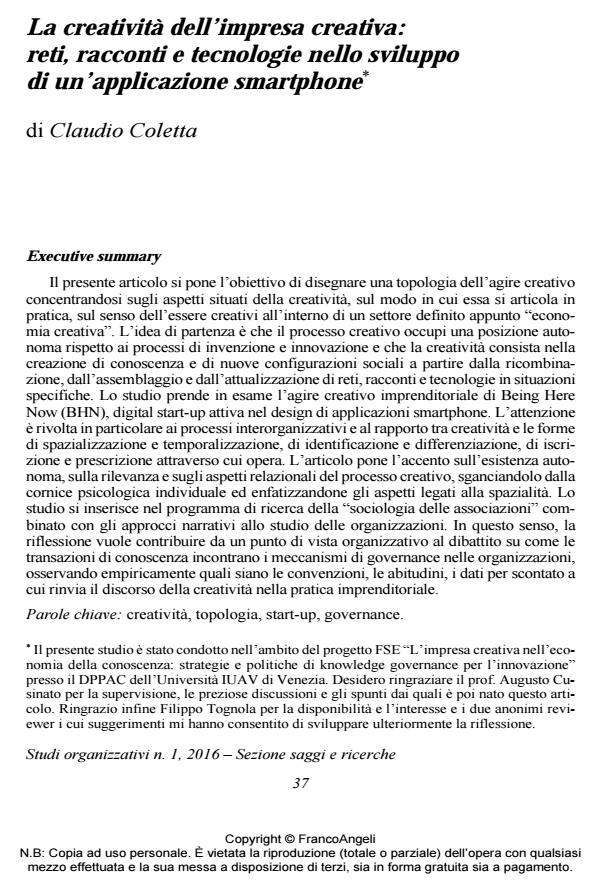La creatività dell’impresa creativa: reti, racconti e tecnologie nello sviluppo di un’applicazione smartphone
Journal title STUDI ORGANIZZATIVI
Author/s Claudio Coletta
Publishing Year 2016 Issue 2016/1
Language Italian Pages 21 P. 37-57 File size 214 KB
DOI 10.3280/SO2016-001002
DOI is like a bar code for intellectual property: to have more infomation
click here
Below, you can see the article first page
If you want to buy this article in PDF format, you can do it, following the instructions to buy download credits

FrancoAngeli is member of Publishers International Linking Association, Inc (PILA), a not-for-profit association which run the CrossRef service enabling links to and from online scholarly content.
The article intends to draw a topology of creativity focusing on its situated aspects: how does creativity act in practice? How does being creative make sense within the creative industry? The basic insight is that the creative process has an autonomous position respect invention and innovation and that creativity 1) stems from recombining, assembling and enacting networks, narratives and technologies and 2) consists in creating new knowledge and new systems of social relations. Such a multidimensional approach aims to grasp the complexity of creative work, following the way through which ideas are generated, inscribed in objects and embedded in actions that in turn produce new ideas.
Keywords: Creativity, topology, start-up, governance.
- Relationships between Heritage, Intangible Capital and Cultural and Creative Industries in Italy: A Framework Analysis for Urban Regeneration and Territorial Development Maria Immacolata Simeon, Assunta Martone, in Advanced Engineering Forum /2014 pp.149
DOI: 10.4028/www.scientific.net/AEF.11.149
Claudio Coletta, La creatività dell’impresa creativa: reti, racconti e tecnologie nello sviluppo di un’applicazione smartphone in "STUDI ORGANIZZATIVI " 1/2016, pp 37-57, DOI: 10.3280/SO2016-001002